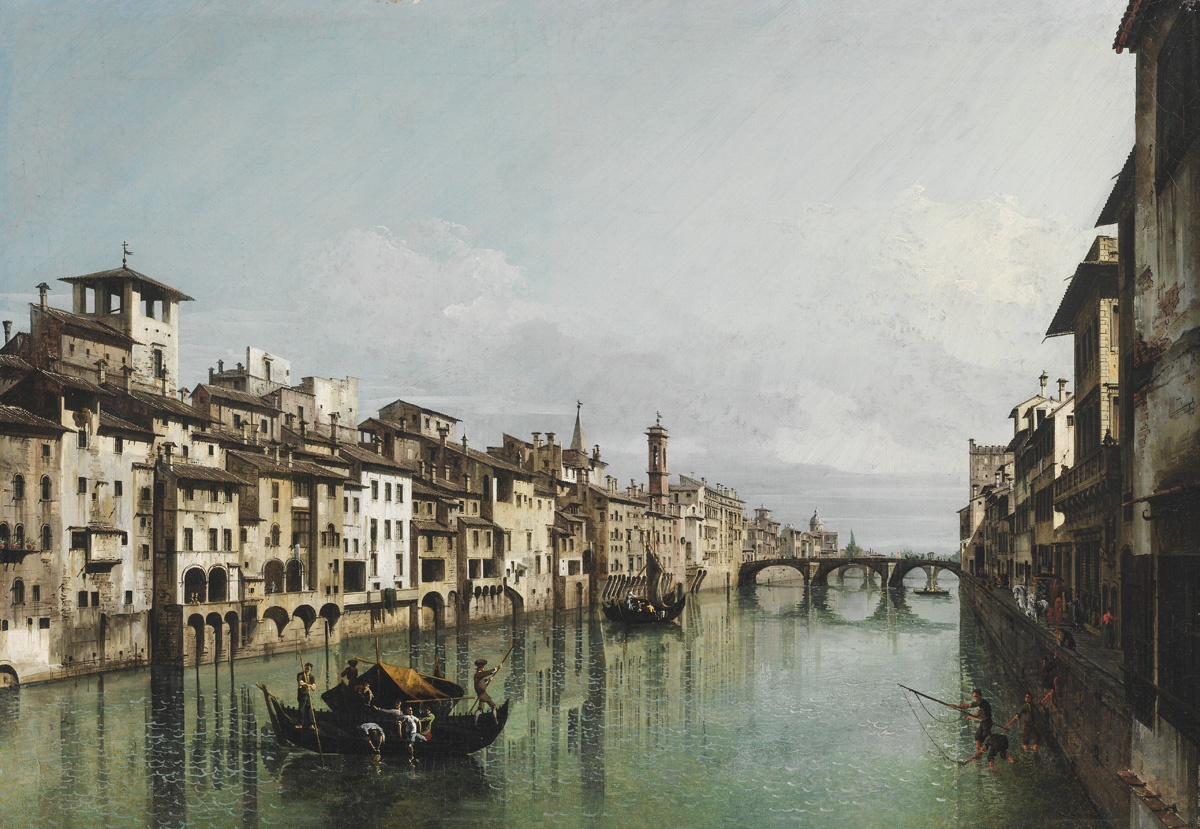By the end of the eighteenth century Venice was living from its past glories. The main source of income in the city had become tourism, and where two centuries ago the crews of victorious fleets of ships had marched, now adventurers, courtesans and card-sharps teemed around the British, German and Hungarian gallants. Tourism gave birth to a new genre of painting: the cityscape, which the visitor could take home as a souvenir, there to conjure up the world of Casanova and Vivaldi. The master who created the genre was Antonio Canale, known as Canaletto, though his nephew Bernardo Bellotto by no means fell short of him in quality. Yet while the uncle incessantly painted the familiar corners of Venice (a decade in London aside), Bellotto became a chronicler of the whole of Europe, from Rome to Vienna, from Dresden to Warsaw. Yet, albeit made in Florence, this enthralling youthful masterpiece cannot help but reveal where the artist learnt to look and to see. The precisely constructed lines of the buildings claim that we have here a document of photographic fidelity, yet the River Arno seems to don the mask of the Grand Canal in Venice. The more thickset forms of Florentine architecture are delicately, almost imperceptibly elongated, and the boats seem to wilfully imitate gondolas. By far the most noticeable give-away is the magical light sparkling on the surface of the water: perhaps it does indeed sparkle this way in Florence too, but only in Venice can it be observed so closely. Axel Vécsey
en

